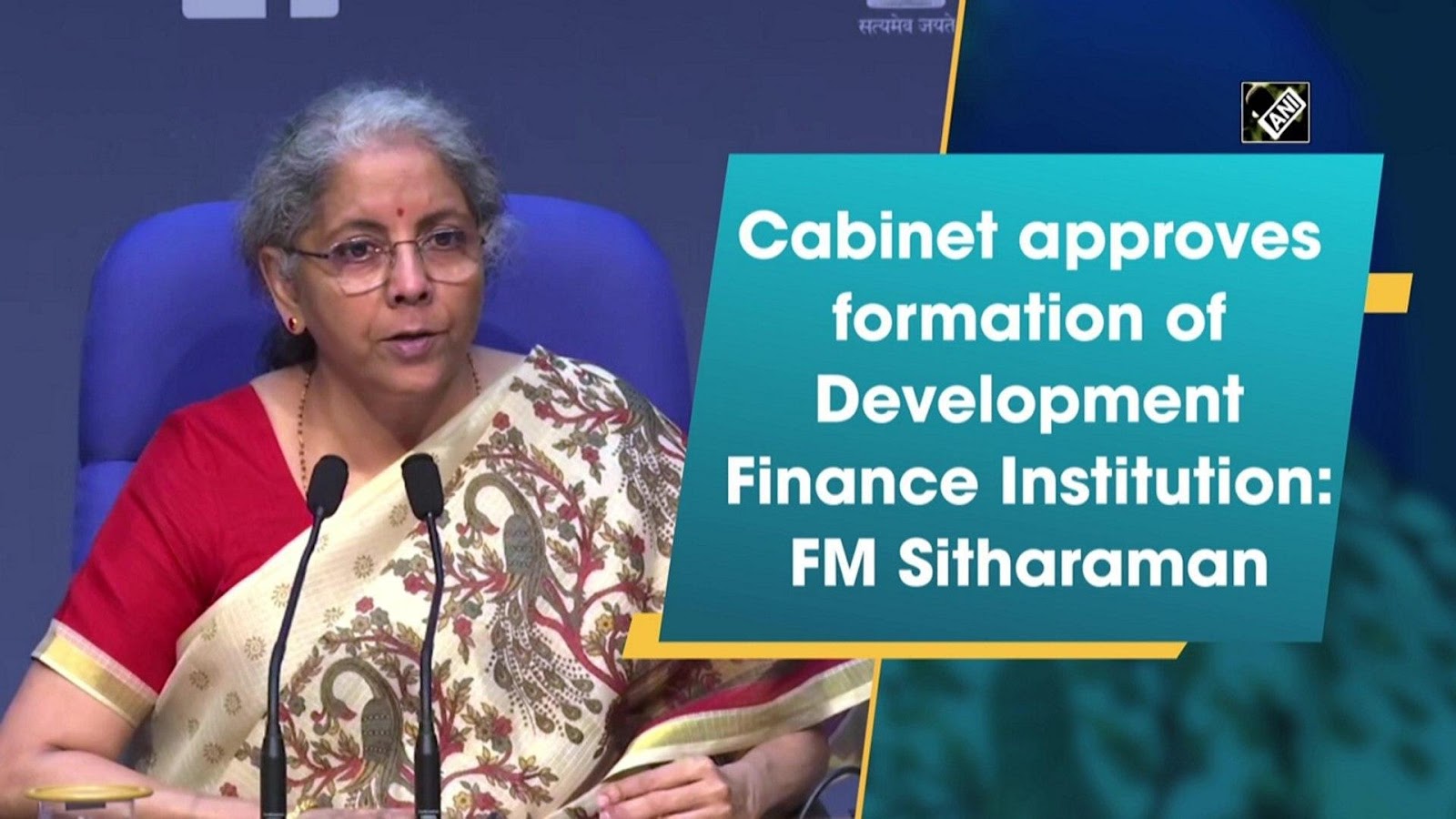
Written by: SHOHOM PAL and NANDINI SIL
Introduction
Nirmala Sintharaman, the present finance minister of India, while announcing the Union Budget 2021-22 focused upon the development of infrastructure through Development Financial Institutions or DFIs. The budget allocates a considerable portion of its funds that is around Rs 20,000 crore towards the establishment of new DFIs in the country to improve long-term financing techniques for infrastructural activities. In India, DFIs have faced significant challenges for which the operations carried out by development banks have contributed to the Indian economy. Thus, the government has understood the need for the development of infrastructure in the country as it also increases the consumer demand in the market. Due to COVID-19, the Indian economy has faced demand and supply shocks which has led to recessionary pressures on the economy. DFIs will facilitate the development of infrastructure which would give direct benefits to the citizens and other related parties, by job creation, reduction of inequalities, and enhancing distribution channels through effective value chains.
Source: Dailymotion
What is a Development Financial Institution?
Development Financial Institutions are financial institutions that are owned by either the government or charitable institutions to finance infrastructure which are of national importance. It may or may not return to meet the commercial return standards. There are several categories of Development Financial Institutions namely national development banks (IDBI, SIDBI, ICICI, IFCI, IRBI, and IDFC.), sector-specific financial institutions(TFCI, EXIM Bank, NABARD, HDFC, and NHB.), investment institutions(LIC, GIC, and UTI), and state-level institutions(State Finance Corporations and SIDCs.).
Source: Economic Discussion
The tenure of finances is generally long term because it is related to infrastructure. Governments establish such institutions for economic growth, better distribution channels through infrastructural advancement, the credit enhancement for infrastructure and housing projects, and debt flows towards infrastructural activities. These institutions streamline the finances in proper channels to gain maximum benefits or returns for financing the projects. A developing economy like India and China needs infrastructure to lay its foundations for economic development. Therefore, it is essential to understand that development financial institutions are important for any economy to reduce inequality, enhance sustainability, and finally, foster growth.
Source:VoxEU
Problems in DFI
One of the major problems for the DFIs in India is that there is an asset-liability mismatch. This leads to a liquidity crisis and the development financial institution is unable to provide loans or finance projects eventually. Generally, DFIs are managed by the government and there are problems of corruption and red-tapism due to lack of proper internal control systems. Therefore, delays in government clearances take up a lot of time and effort put into finance an infrastructural project. In India, DFIs are diverting their goal from long-term infrastructure projects to profitable commercial projects. For instance, Housing and Urban Development Corporation gave long-term finance for the establishment of an 18-hole golf course and a five-star hotel. This creates a problem because in a country where there are 100 million slum-dwellers investing in commercial projects should not be a priority for the DFIs.
What can government do regarding problems
Firstly, the government should focus on the liquidity models that are being used by the DFIs. Due to asset-liability mismatch, the liquidity is dried up. An asset-liability committee should be set up by the DFIs who can measure the gap between the assets and the liabilities so that the DFIs have enough funds to lend out as loans. The government should also guarantee that the sole purpose for the DFIs establishment in the Indian economy should be for the most vulnerable or marginalised. The goals that need to be formulated should be clear and distinct and should adhere to the norms. The deal processing time should be expedited. In India, it takes a considerable amount of time for a contract to be enforceable. DFIs have also faced challenges in the similar field. Thus, an efficient mechanism in processing should be implemented which not only will reduce cost but also increase the operational efficiency of the DFIs.
The government should also let the DFIs take long term loans from domestic and external sources. The DFIs should be able to tap into a pool of capital in the form of pension funds, insurance companies and mutual funds. The Finance Minister, Nirmala Sintharaman, has announced that the new DFIs that will be established in India will follow such models so that it can facilitate credit in the economy. The government should also focus on building a deep bond market for the accessibility of loans and advances that might be required by the DFIs in the long run as the amount of NPA (non-performing assets) in the country is at a rise.
The management structure should be sound and internal control systems should be regulated and revised with utmost efficiency. The board members should be chosen in a way in which 50 percent must be non-executive members that would ensure unbiased and robust decisions. There should be clear guidelines for investment purposes by the DFIs to generate funds to be lent out in the market. This will help in diversification of the risk present in the portfolio and will eventually mitigate the risks. This would make the DFI model in India sustainable for the future.
Source: Business Standard
Conclusion
The DFIs are expected to contribute 3 lakh crores by 2024 for infrastructure projects under the National Infrastructure Pipeline. The Union budget 2021-22 has focused upon development of infrastructure through various newly launched schemes and methods. Therefore, DFIs are the need of the hour. The pandemic and other macroeconomic factors have led to reduction in consumer demand which has brought in recessionary pressures on the economy. Therefore, development strategies on how to carry on with the operations efficiently and effectively by the DFIs for infrastructural activities is quintessential.
Source: Vajiram IAS
References
financialexpress.comlivemint.com/dalberg.com/



